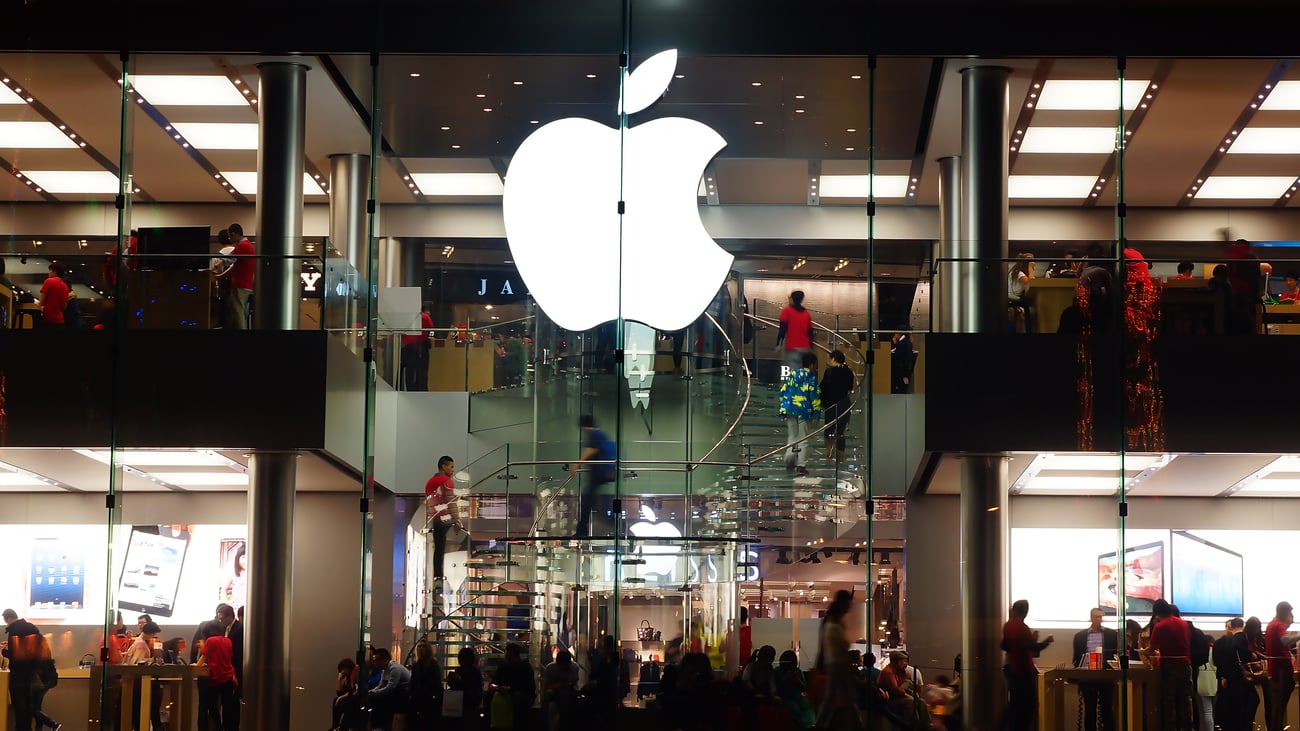iObsessed: The world’s love affair with iPhones results in Apple cementing its cult status

Here’s how to create a cult following, break all-time quarterly profit records in corporate history and improve margins on your business. You build a must-have big-as iPhone, hit high price points and create crazy margins in a mass market product and make your competitors lose sleep.
Samsung must be green with envy and losing sleep as it struggles to keep ahead of Apple in the growing Chinese market. Analysts reckon the iphone’s breakthrough in the Chinese market and exceptionally good margins were among factors that contributed to Apple’s stellar earnings, just reported.
According to rating agency Standards and Poor, Apple’s quarterly profit of US$18 billion (NZ$24.7 billion) for the quarter ended December 2014 is the highest ever recorded in history, surpassing Exxon Mobile’s US$15.9 billion, the last record holder.
Apple’s profit in the same quarter a year ago was $13.1 billion. Quarterly revenue was also at a record, at US$74.6 billion (US$57.6 billion the same quarter a year earlier.)
Apple says record revenues came from iPhone and Mac sales as well as record performance of the App Store. The company adds that iPhone unit sales of 74.5 million also set a new record.
Nobody, probably not even Steve Jobs himself, could’ve predicted the outbreak of craziness the iPhone unleashed upon the world.
Must have bigger screen iPhones?
In order to the get the latest and great model, people have been reported to try to sell their three newborn babies, their own kidney, and rent out their girlfriend, trade sexual favours and demand a dowry from a future brother-in-law, just to have an iphone.
The frenzy of iPhone demands ramped up sales which accounted for almost two thirds of the company’s quarterly revenue of $US74.6 billion.
After the release of the latest models, the larger screened iPhone 6 and 6 plus in September 2014, 74.5 million iPhones were sold in the lead up to Christmas.
The company didn’t release a breakdown in sales for the latest models, but analysts point to the iPhone 6 and 6 plus being major contributors.
Apple is currently (January 30, 2015) valued at US$671 billion at the current stockmarket price of US$119 per share.
This financial strength gives Apple the ability to buy companies such as Netflix, Snapchat and Twitter and still have money in the bank.

Innovation and conquering China
One analysts say Apple’s invasion the Chinese market and a deal with China Mobile — the world’s biggest mobile network – helped.
Professor of Strategy at Warwick Business School and researcher of Apple, Loizos Heracleous, says Apple’s success is a result of innovation in product improvements and expansion into other markets.
“Apple’s entry to China has been instrumental to revenue growth and the upside potential in revenues from this market is very significant,” he says.
Its slugfest with Samsung continues in China where Apple overtook the South Korean phone maker’s place as the number one smartphone company in China in the last quarter.
According to Reuters, Samsung’s earnings from smartphones and other mobile gadgets dropped 64% percent annually in the October-December period to 1.96 trillion won (US$1.80 billion), contributing to its first annual earnings fall in three years. That was the mobile division’s fifth consecutive quarter of decline. Samsung is reported to have sold between 72.2 million and 75.1 million smart phones during the period reviewed.
Bigger iPhone screens, smaller iPad sales
Research firm International Data Corp said Apple’s sales were impressive because it was selling its new smartphone models at a higher price point than its old models, whereas Samsung was offering smartphones at a lower price point.
Heracleous says Apple’s higher price point for its latest smartphones means operating profits are up at nearly 40% – which is “unprecedented in consumer electronics”.
Its success in the last quarter must be a punch in the gut to Samsung, who previously had an edge in the competitive market with the bigger screens on their smartphones.
This no longer distinguishes them from the Apple franchise, as the iPhone 6’s screen measures 4.7 inches diagonally and the 6 Plus is 5.5 inches.

As the popularity for big-screened smartphones grew, iPad sales numbers actually dropped by 22% from 2013.
Hercacleous says even though iPad sales are falling as smartphone sales soar, the overall product portfolio of Apple is balanced in the stages of the product life cycle.
He says Applepay’s revenue potential has been underrated, as it brings synergy across the different devices.
The payment technology gives users the ability to pay in shops with their iPhone or iWatch and is due for release in April.
“”Apple’s strategy displays related diversification. Those who argue that its success is down to a single product do not appreciate the considerable synergies across Apple’s products and services, nor the continued development and strengthening of Apple’s ecosystem,” he says.




